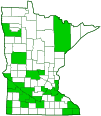grimmia dry rock moss
(Grimmia laevigata)
Conservation • Description • Habitat • Ecology • Use • Distribution • Taxonomy
Conservation Status |
|
|||||||
| IUCN Red List | LC - Least Concern |
|||||||
| NatureServe | NNR - Unranked SNR - Unranked |
|||||||
| Minnesota | not listed |
|||||||
Description |
||
Grimmia dry rock moss is an upright, tuft-forming (acrocarpous) moss. It occurs worldwide on all continents except Antarctica. It is mostly restricted to the moderate climate areas of the northern and southern hemispheres, more specifically the Temperate Zones and the adjacent half of the Subtropical Zones. In the United States it is most common in the middle latitudes, less common in Minnesota where it reaches the northern extent of its range. In this state it is found in open areas on rock outcrops. It grows under full sun on exposed acidic rock or on thin soil over rock. Grimmia dry rock moss is extraordinarily drought resistant. Dried herbarium specimens that have been rehydrated after at least ten years have resumed photosynthetic and metabolic activity. It has adapted to a broad range of environments, yet it shows very little morphological variability throughout its range. Bryologists suggest that a single species cannot be so adaptive, and that Grimmia laevigata must consist of a group of morphologically indistinguishable but genetically distinct (cryptic) species. Grimmia dry rock moss appears as a hoary, dark green to dark brown tuft so dense that branching of individual stems cannot be seen without dissection. Each stem is erect or ascending, 3⁄16″ to ¾″ (5 to 20 mm) long, densely leafy, green to grayish-green above, and green to dark brown or nearly black below. It is rounded-triangular in cross section and has a wellidefined central strand. It is anchored to the substrate by smooth, reddish-brown, root-like filaments (rhizoids). Young stems grow out of decomposing old stems. Leaves are oblong egg-shaped to oblong lance-shaped, 1⁄16″ to ⅛″ (1.5 to 3.0 mm) long, and 1⁄32″ (0.4 to 0.6 mm) wide. When moist the leaves are green and loosely spreading. When dry they are gray to almost black and loosely appressed but not contorted. The blade is somewhat concave in cross section but is not ridged (keeled). The base of the blade is broad and runs down the stem (decurrent). The tip is narrowly pointed and has a 1⁄64″ to 1 ⁄16″ (0.3 to 2.0 mm) long, thin, translucent (hyaline), hair-like extension (awn). The awn constitutes almost half the total length of the blade. The central axis (costa) is flared at the base and one-third to one-quarter the width of the blade. In the middle of the blade the costa is flattened, less than 1.5 times as thick as the adjacent leaf. The margins of the blade are flat. Leaves on young stems and on the lower part of older stems are scale-like and are appressed to the stem. The stem, leaves, and root-like structures (rhizoids) together are the gametophyte phase of the moss life cycle. Male reproductive structures (antheridia) and female reproductive structures (archegonia) are borne on separate plants at the tip of the stem. Each is subtended by a rosette of somewhat longer leaves. Spore-producing reproductive structures (sporophytes) are rarely produced, and most populations will not have any. They are apparently not produced anywhere in our area, so no description is provided here. |
||
Growth Form |
||
Acrocarp |
||
Height |
||
3⁄16″ to ¾″ (5 to 20 mm) |
||
Similar Species |
||
Habitat |
||
Moist to dry. Open areas on rock outcrops. Full sun. Acidic rock and thin soil over rock. |
||
Ecology |
||
|
||
Use |
||
|
||
Distribution |
||||
|
Sources Janssens, Joannes A., and The Minnesota County Biological Survey, Minnesota Department of Natural Resources, State of Minnesota. County Atlas of Minnesota Mosses. May, 2000. |
|||
| 7/22/2022 | ||||
Nativity |
||||
Native |
||||
Occurrence |
||||
Not uncommon |
||||
Taxonomy |
|||
| Kingdom | Plantae (Plants) | ||
| Division | Bryophyta (mosses) | ||
| Subdivision | Bryophytina (moss) | ||
| Class | Bryopsida (joint-toothed mosses) | ||
| Subclass | Dicranidae | ||
Order |
Grimmiales | ||
Family |
Grimmiaceae (rock mosses) | ||
Genus |
Grimmia | ||
Subordinate Taxa |
|||
|
|||
Synonyms |
|||
Campylopus laevigatus Grimmia glauca Grimmia leucophaea Grimmia sarcocalyx |
|||
Common Names |
|||
grimmia dry rock moss hoary grimmia smooth-capsuled dry rock moss |
|||
Glossary
Acrocarp
A moss that grows in cushions or tufts; has an upright growth habit; is usually unbranched or sparingly forked; and has the female sporophytes borne at the tips of stems and branches. Adj.: acrocarpous.
Awn
A stiff, bristle-like appendage at the tip of the glume, lemma, or palea of grass florets.
Costa
On ferns: The central axis of a pinna, to which pinnules are attached. On mosses: the central axis (midvein) of a leaf. On insects: The vein on the leading edge of the forewing.
Decurrent
Extending down the stem from the point of attachment, as with leaf blades and mushroom gills.
Rhizoid
A filament arising from the lower stem of a moss, liverwort, or alga that anchors it to a substrate.
Seta
A stiff, hair-like process on the outer surface of an organism. In Lepidoptera: A usually rigid bristle- or hair-like outgrowth used to sense touch. In mosses: The stalk supporting a spore-bearing capsule and supplying it with nutrients. Plural: setae. Adjective: setose.
Visitor Photos |
|||||
Share your photo of this plant. |
|||||
| This button not working for you? Simply email us at info@MinnesotaSeasons.com. Attach one or more photos and, if you like, a caption. |
|||||
Alfredo Colon |
|||||
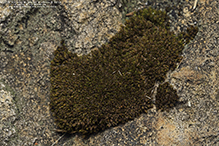 |
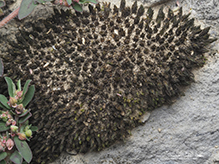 |
||||
MinnesotaSeasons.com Photos |
|||||
|
|||||
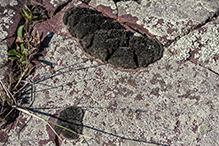 |
 |
||||
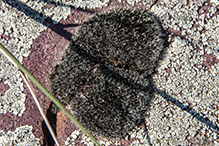 |
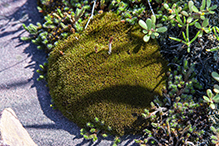 |
||||
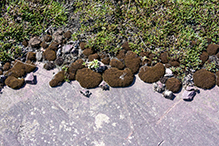 |
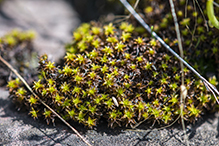 |
||||
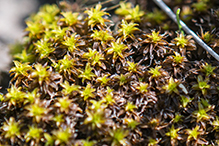 |
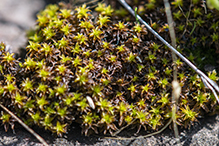 |
||||

Slideshows |
||

Visitor Videos |
|||
Share your video of this plant. |
|||
| This button not working for you? Simply email us at info@MinnesotaSeasons.com. Attach a video, a YouTube link, or a cloud storage link. |
|||
Other Videos |
|||

Visitor Sightings |
|||||
Report a sighting of this plant. |
|||||
| This button not working for you? Simply email us at info@MinnesotaSeasons.com. Be sure to include a location. |
|||||
| Alfredo Colon 8/16/2022 |
Location: Albany, NY |
||||
| Alfredo Colon 8/6/2019 |
Location: Woodbury, MN |
||||
MinnesotaSeasons.com Sightings |
|||||

Created: 7/23/2022
Last Updated:
